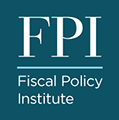Latest Census Data Confirms New York Losing Residents to Neighboring States with Lower Housing Costs
New Census data revealed that New York State lost a net total of 244,100 people in 2022. The latest Census data, which details state-to-state migration patterns, confirms the Fiscal Policy Institute's prior findings: New Yorkers are primarily moving to neighboring states with a lower cost of living, and in particular, lower housing costs. Meanwhile, less than half of New Yorkers are leaving for low tax states. This data confirms State fiscal policy should focus on turning New York into a place where people can afford to live and raise families — from investing in universal childcare and high-quality public education to affordable housing and reliable public transit. Conversely, budget cuts or underfunding will only hinder New York's economic recovery. Increasingly unaffordable housing and childcare, combined with shrinking state services, will continue to drive both individuals and businesses out of our state.


